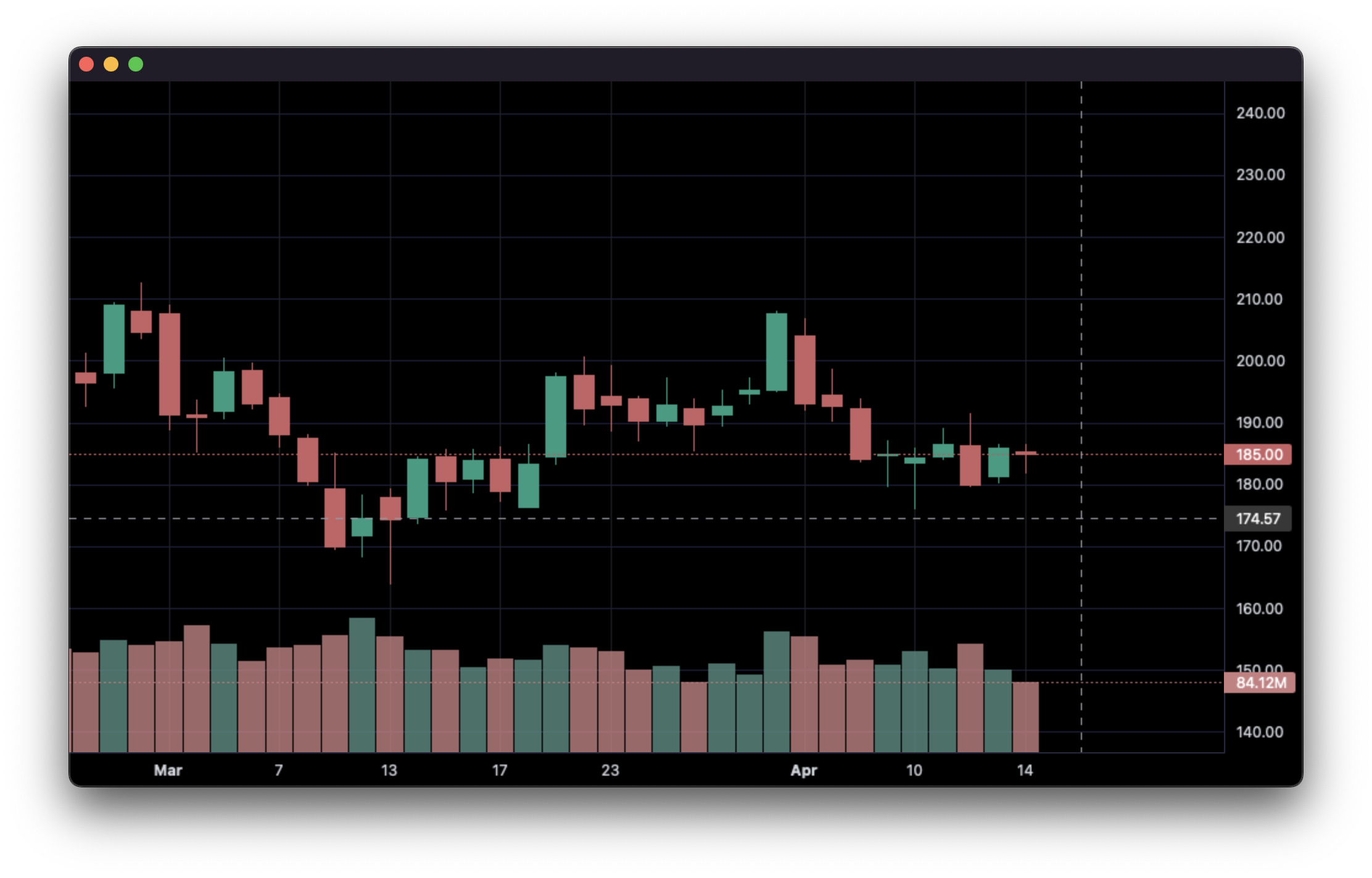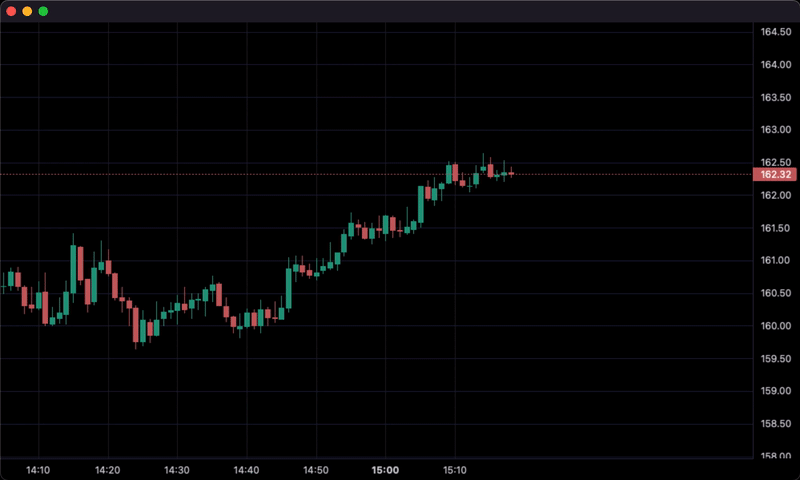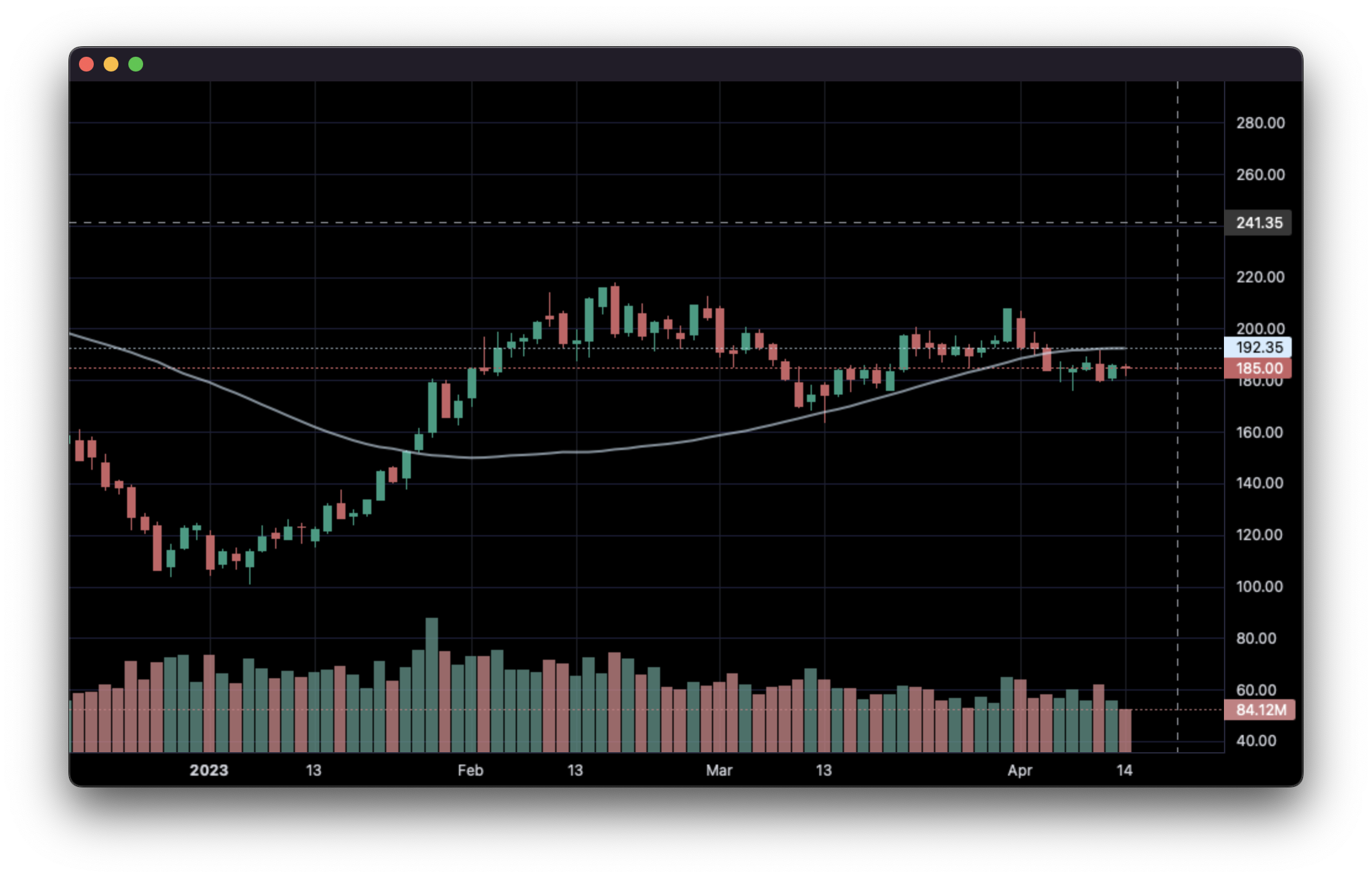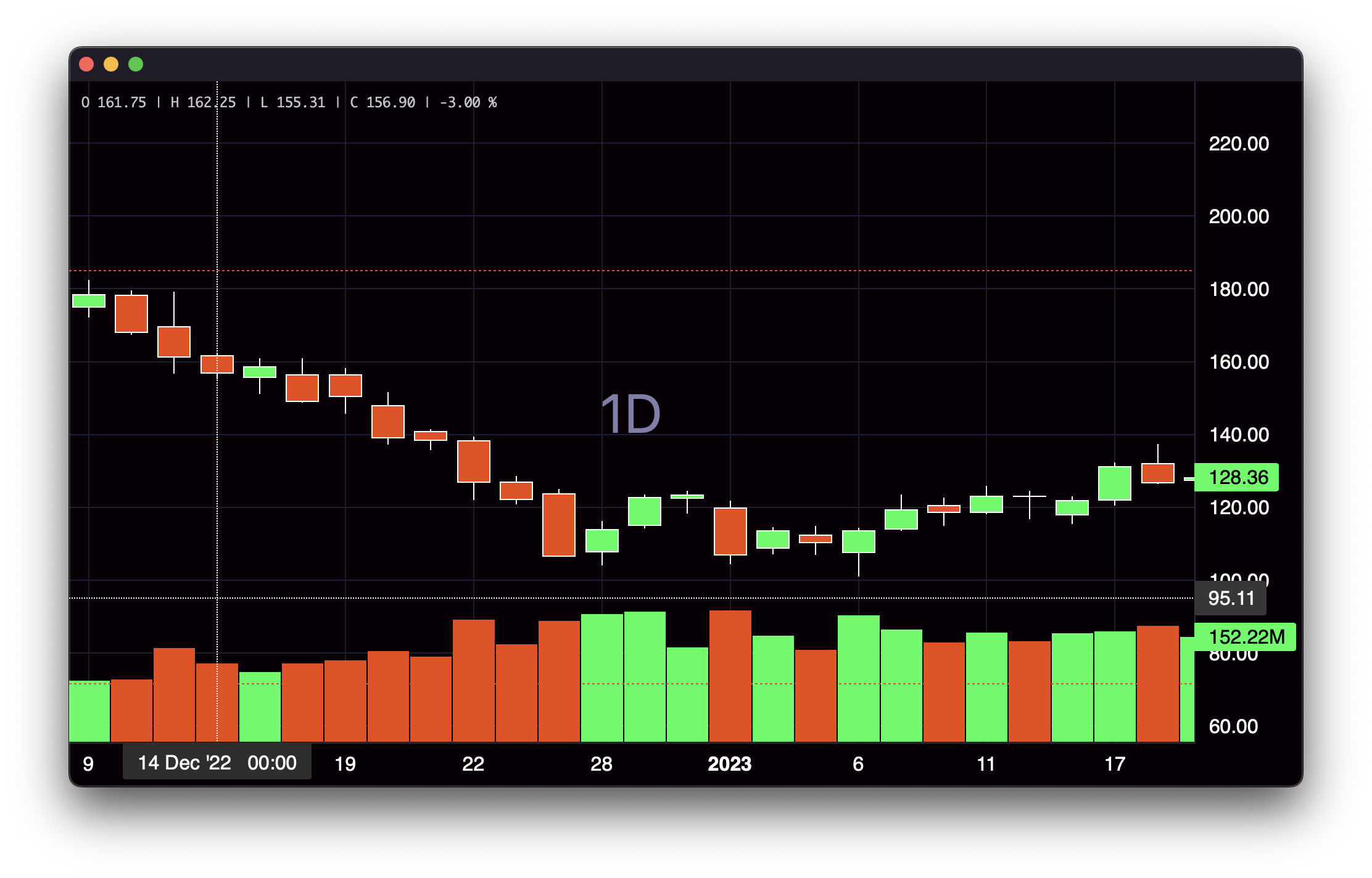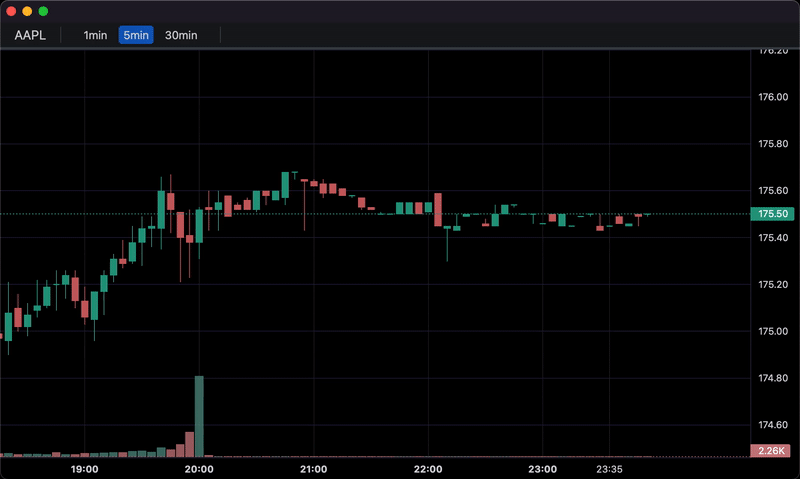lightweight-charts-python aims to provide a simple and pythonic way to access and implement TradingView's Lightweight Charts.
pip install lightweight-charts
- White screen? Having issues with pywebview? Click here.
- Simple and easy to use.
- Blocking or non-blocking GUI.
- Streamlined for live data, with methods for updating directly from tick data.
- Supports: Jupyter Notebooks, PyQt, wxPython, Streamlit, and asyncio.
- Callbacks allowing for timeframe (1min, 5min, 30min etc.) selectors, searching, and more.
- Multi-Pane Charts using the
SubChart. - Direct integration of market data through Polygon.io's market data API.
import pandas as pd
from lightweight_charts import Chart
if __name__ == '__main__':
chart = Chart()
# Columns: | time | open | high | low | close | volume (if volume is enabled) |
df = pd.read_csv('ohlcv.csv')
chart.set(df)
chart.show(block=True)import pandas as pd
from time import sleep
from lightweight_charts import Chart
if __name__ == '__main__':
chart = Chart()
df1 = pd.read_csv('ohlcv.csv')
df2 = pd.read_csv('next_ohlcv.csv')
chart.set(df1)
chart.show()
last_close = df1.iloc[-1]
for i, series in df2.iterrows():
chart.update(series)
if series['close'] > 20 and last_close < 20:
chart.marker(text='The price crossed $20!')
last_close = series['close']
sleep(0.1)import pandas as pd
from time import sleep
from lightweight_charts import Chart
if __name__ == '__main__':
df1 = pd.read_csv('ohlc.csv')
# Columns: | time | price | volume (if volume is enabled) |
df2 = pd.read_csv('ticks.csv')
chart = Chart(volume_enabled=False)
chart.set(df1)
chart.show()
for i, tick in df2.iterrows():
chart.update_from_tick(tick)
sleep(0.3)import pandas as pd
from lightweight_charts import Chart
def calculate_sma(data: pd.DataFrame, period: int = 50):
def avg(d: pd.DataFrame):
return d['close'].mean()
result = []
for i in range(period - 1, len(data)):
val = avg(data.iloc[i - period + 1:i])
result.append({'time': data.iloc[i]['date'], 'value': val})
return pd.DataFrame(result)
if __name__ == '__main__':
chart = Chart()
df = pd.read_csv('ohlcv.csv')
chart.set(df)
line = chart.create_line()
sma_data = calculate_sma(df)
line._set(sma_data)
chart.show(block=True)import pandas as pd
from lightweight_charts import Chart
if __name__ == '__main__':
chart = Chart(debug=True)
df = pd.read_csv('ohlcv.csv')
chart.layout(background_color='#090008', text_color='#FFFFFF', font_size=16,
font_family='Helvetica')
chart.candle_style(up_color='#00ff55', down_color='#ed4807',
border_up_color='#FFFFFF', border_down_color='#FFFFFF',
wick_up_color='#FFFFFF', wick_down_color='#FFFFFF')
chart.volume_config(up_color='#00ff55', down_color='#ed4807')
chart.watermark('1D', color='rgba(180, 180, 240, 0.7)')
chart.crosshair(mode='normal', vert_color='#FFFFFF', vert_style='dotted',
horz_color='#FFFFFF', horz_style='dotted')
chart.legend(visible=True, font_size=14)
chart.set(df)
chart.show(block=True)import asyncio
import pandas as pd
from lightweight_charts import Chart
def get_bar_data(symbol, timeframe):
if symbol not in ('AAPL', 'GOOGL', 'TSLA'):
print(f'No data for "{symbol}"')
return pd.DataFrame()
return pd.read_csv(f'bar_data/{symbol}_{timeframe}.csv')
class API:
def __init__(self):
self.chart = None # Changes after each callback.
async def on_search(self, searched_string): # Called when the user searches.
new_data = get_bar_data(searched_string, self.chart.topbar['timeframe'].value)
if new_data.empty:
return
self.chart.topbar['corner'].set(searched_string)
self.chart.set(new_data)
async def on_timeframe_selection(self): # Called when the user changes the timeframe.
new_data = get_bar_data(self.chart.topbar['corner'].value, self.chart.topbar['timeframe'].value)
if new_data.empty:
return
self.chart.set(new_data)
async def main():
api = API()
chart = Chart(api=api, topbar=True, searchbox=True)
chart.legend(True)
chart.topbar.textbox('corner', 'TSLA')
chart.topbar.switcher('timeframe', api.on_timeframe_selection, '1min', '5min', '30min', default='5min')
df = get_bar_data('TSLA', '5min')
chart.set(df)
await chart.show_async(block=True)
if __name__ == '__main__':
asyncio.run(main())




